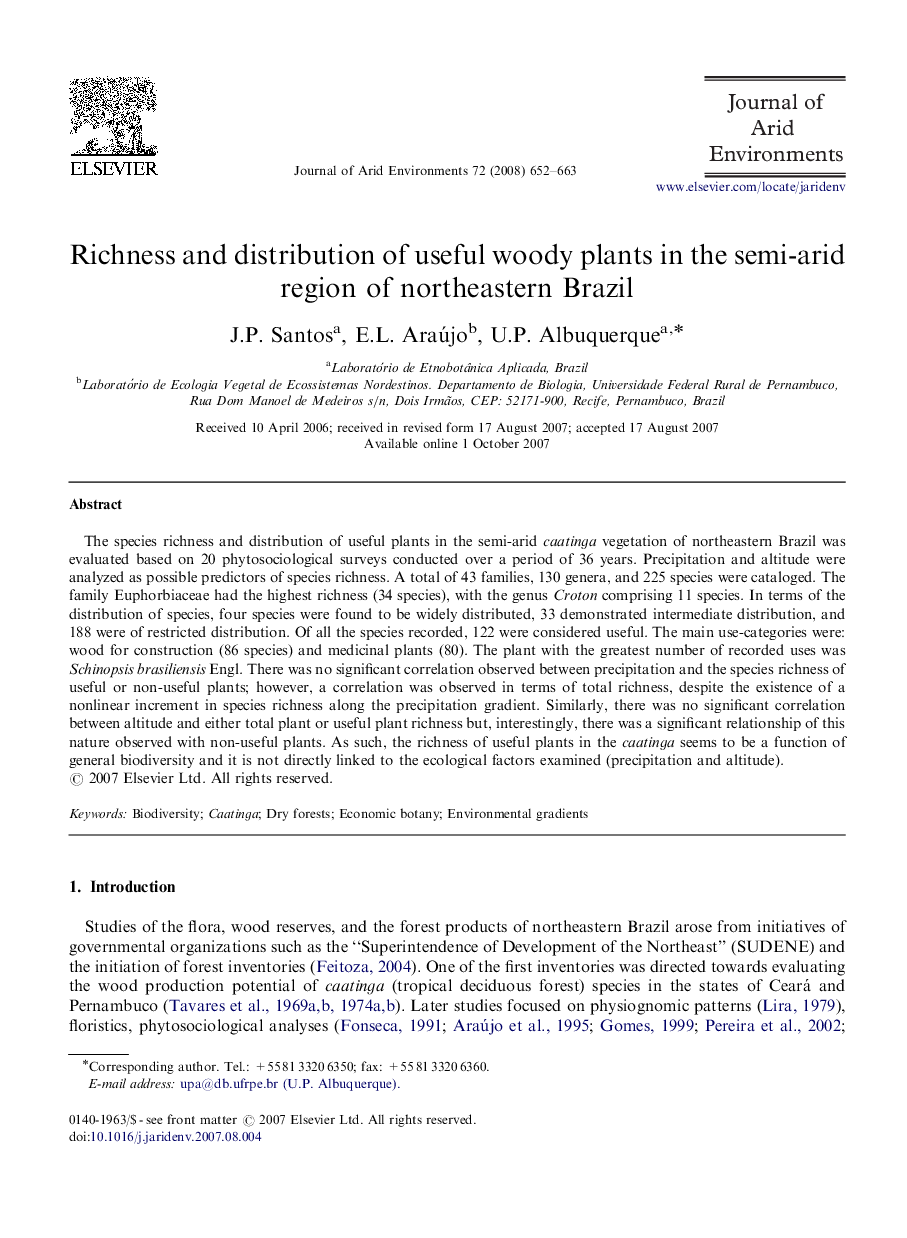| Article ID | Journal | Published Year | Pages | File Type |
|---|---|---|---|---|
| 4394406 | Journal of Arid Environments | 2008 | 12 Pages |
The species richness and distribution of useful plants in the semi-arid caatinga vegetation of northeastern Brazil was evaluated based on 20 phytosociological surveys conducted over a period of 36 years. Precipitation and altitude were analyzed as possible predictors of species richness. A total of 43 families, 130 genera, and 225 species were cataloged. The family Euphorbiaceae had the highest richness (34 species), with the genus Croton comprising 11 species. In terms of the distribution of species, four species were found to be widely distributed, 33 demonstrated intermediate distribution, and 188 were of restricted distribution. Of all the species recorded, 122 were considered useful. The main use-categories were: wood for construction (86 species) and medicinal plants (80). The plant with the greatest number of recorded uses was Schinopsis brasiliensis Engl. There was no significant correlation observed between precipitation and the species richness of useful or non-useful plants; however, a correlation was observed in terms of total richness, despite the existence of a nonlinear increment in species richness along the precipitation gradient. Similarly, there was no significant correlation between altitude and either total plant or useful plant richness but, interestingly, there was a significant relationship of this nature observed with non-useful plants. As such, the richness of useful plants in the caatinga seems to be a function of general biodiversity and it is not directly linked to the ecological factors examined (precipitation and altitude).
